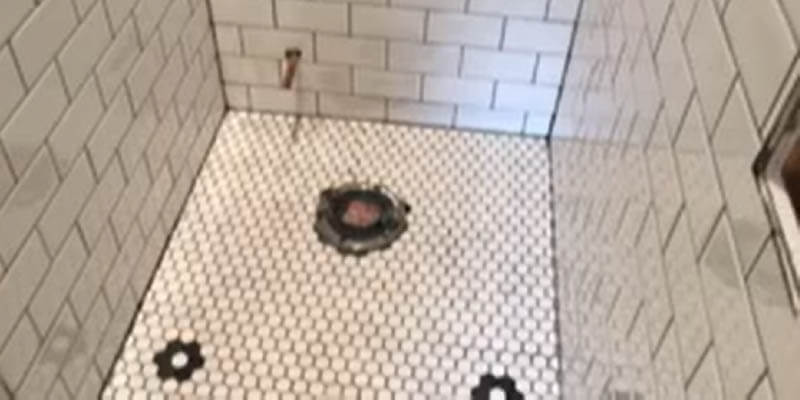When you’re a homeowner, investing in your home is the best thing you can do, especially if it increases its real estate value. And adding a new bathroom to the basement achieves that in addition to improving the functionality of your home.
However, adding a fully functional bathroom to the basement is not an easy project. In this article, we’ll discuss the general process of how to build a bathroom in the basement in brief.
Advantages of a Basement Bathroom
Despite the amount of work involved in building it, a basement bathroom is actually a blessing. Most people who are remodeling their basements tend to forget about adding a bathroom there. This is probably because they don’t have much idea about its awesome advantages.
a) Increased Value
A basement bathroom not only increases the functionality of a finished basement but also makes your home stand out in a competitive real estate market. According to a recent survey, adding a bathroom in a house increases the return on investment by 60%! It can also get higher, depending on the quality and overall looks of the bathroom.
b) Convenience
Having a fully furnished basement with a bathroom also makes it convenient for overnight guests. It gives them a lot of privacy. Additionally, a temporary immobile family member is also benefitted a lot.
How to Install a Basement Bathroom (Step-by-Step Guide)
As we mentioned before, installing a bathroom is a tough process, especially when it is in the basement. While there are some things you can do by yourself, many other things will eventually require help from professionals.
But understanding what goes into this process might help you to work with the pros. Besides, you may even be able to do some work by yourself as well! So, here is a manual on steps to build a bathroom in the basement.
Step 1 – Planning and Designing
It takes a good bit of research, measuring, and designing before making a bathroom in the basement of a house. Proper planning will pave the way for a smooth project. After all, there’s nothing more unnerving than getting things halfway done only to find out that the measurements are all messed up.
Step 2 – Laying Out the Walls
The next step to planning and designing is roughing the outer walls. You need to mark the wall locations and do the wall framing. In this step, you’ll need to demolish the concrete and dig a trench to connect the toilet, sink and shower locations to the main sewer line. All of these, however, require hiring carpenters and plumbers.
Related: Does Walgreens Have A Bathroom For Customers
However, if you’re thinking of adding the bathroom in the basement without breaking concrete, then you could choose up-flushing toilets, sinks, and showers.
Also read: How to Caulk a Bathroom Sink Faucet?
Step 3 – Plumbing
Plumbing for the basement is of special consideration since above-ground bathrooms rely on gravity for draining. This is known as the slope or fall of the drainage system. Basement drainage, on the other hand, cannot rely on gravity much since there isn’t adequate fall.
This poses a problem in natural drainage, and so a system of basement bathroom plumbing with an ejector pump becomes important. It is a special solution for lift-pumping waste and water into the sewer lines.
Another important thing to consider is the ventilation of the bathroom’s plumbing system. Because flushing the wastewater usually pushes the existing air into the pipes.
This can sometimes create a water lock unless it is vented. Knowing how to vent basement bathroom plumbing can save you from spending on plumbers again and again.
Sometimes while trying to make the bathroom, you may find the pipes already roughed in. In that case, you need to know how to finish a basement bathroom with rough-in plumbing. But that’s a separate discussion we’ll keep aside for another article.
Step 4 – Electrical Consideration
You need to call an electrician over after all the plumbing works. There should be boxes for lighting fixtures and outlets. So, installing electrical cables properly is a necessary consideration as well.
Step 5 – Ventilation Requirements
The environment inside a bathroom is humid. Especially those in the basements are infamous for collecting moisture which leads to the formation of mold. Although most household molds are harmless, some are quite dangerous for human health.
Therefore, to save your possession from toxic mold growth, you need to install proper ventilation. After all, you don’t want to remove mold from the bathroom ceiling every month, right?
Step 6 – Installations
There are many things you need to shop for and install in the bathroom. Let’s see what they are.
a) Basement Toilet Options and Installation
There is a wide range of options when it comes to toilets. Although sometimes the toilets used in usual bathrooms work fine for basements, there are some other options that work better.
- Pressure-assisted Toilets
These toilets will help out a lot when the basement bathroom’s plumbing doesn’t have enough fall. It uses air pressure to force the water and waste through the lines – preventing any clogs.
- Composting Toilet
With this toilet, you can save on water since it can turn sewage into compost. However, it will require enough outside ventilation, which might be hard to provide in the basement.
- Sewage-ejector Toilet
People usually use this one for above-ground toilets too. It basically stores the sewage temporarily before pumping it into the septic or sewage line.
- Up-flushing Toilet
This is an excellent option if you don’t want to break up the basement concrete floor to access the sewer line. You can hook this toilet with the existing sewer lines.
b) Bathtub or Shower
You’ll also have to consider the type of bathroom you’d want: a shower or a bathtub? Depending on the space available, you might opt for a half-bath with a sink and a toilet or a full-sized bathroom.
Regardless of what you pick, balancing and calculating the space is of utmost importance. For the bathroom, you need to consider adding a high-powered ventilation fan as well.
c) Sinks and Mirror
The space available also decides whether you’d install a full vanity sink or just a pedestal sink. Full vanity sinks drain into the same plumbing established for the toilet. And pedestal sinks save a lot of space.
As for the mirror, a cheap builder’s grade mirror won’t look impressive. But if you want to save money, hang a frameless mirror without clips, and you’ll create an upscale appeal.
d) Lighting
The right lighting can turn any room into a luxurious space. And since natural light is limited in the basement, this factor becomes much more important.
You have tons of options to choose from when it comes to lighting. Whether you want to install luxurious lighting or just save money, there is no shortage of great options out there.
Apart from the ceiling, installing lights on each side of the mirror is a great idea. Besides, recessed lighting is also another excellent way to bring a sophisticated look.
Also read: Read 9 Basement Bathroom awesome ideas
Step 7 – Finishing with Tiles and Painting
You need to pick tiles that complement the lighting and the color of the bathroom. There are specialized non-slippery tiles for bathrooms available on the market. The key to making the tile work look amazing is excellent finishing. A skilled DIYer or a professional should do this job.
Painting is also another important step, and it should help brighten the bathroom along with the lighting and tiles.
FAQs
Should I hire a professional or try to do it myself?
How much does it cost to add a bathroom in the basement?
How can I reduce my cost when adding a basement bathroom?
Additionally, playing this smart reduces the workload by minimizing the amount of plumbing as well. This also decreases the service cost of plumbers.
Do I need to install backwater valves?
Wrapping Up!
Before you start planning for the basement bathroom, you need to check it with your local building authorities since some municipalities require extra permits and modifications.
Anyways, we hope this article has helped you understand how to build a bathroom in the basement with proper steps and guidelines. In the end, the most important thing to consider in a basement bathroom is drainage. Keep that working well, and you’re almost set.
Want to Learn More?
- How to Remove Moen Bathroom Faucet Handle (7 Steps)
- Should You Caulk Around Shower Base? (A Proper Guidelines)
- Should I Caulk Around Shower Escutcheon: If Yes Then How?
- 4 Best Caulks For Air Sealing of 2022 | Top Pick For Your Home
Hello! this is John Cox. If I’m not wrong, you love Home. Right? And you already met one of them who’ve been in this field since 2005 and still go on. According to my interest, I’ve started this blog to share my thoughts about Home sectors, and you’ll love it.


